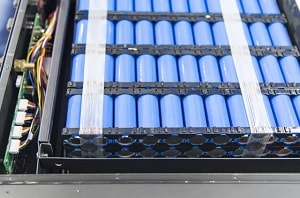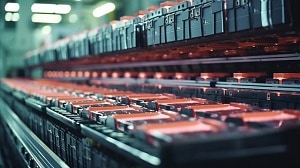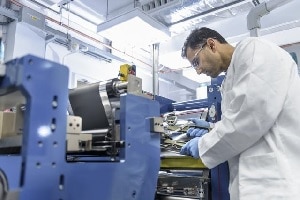Overview
Battery market growth has increased demand for battery manufacturing and research equipment used to test product quality, protect the environment and worker’s health, and for sustainable material recycling.
What types of battery analyses are performed? Analysis of all battery components: anode and cathode materials, electrolytes, separators, and raw materials such as pure graphite, metal oxides, solvents, and additives is necessary. Battery analysis equipment helps manufacturers ensure safe, stable, and cost-effective operation, and supports researchers looking to improve battery performance and to extend battery lifetime.
Agilent supplies the battery industry with analytical equipment, vacuum pumps, training, method development, and technical consulting, in addition to offering purchasing, finance, lab audits, and asset management support.
Learn more about Agilent's offerings across the battery value chain here.
Batteries: Across the Value Chain
-
The first step in producing batteries for various applications, such as electric vehicles, consumer electronics, and grid storage involves extracting and purifying raw materials such as lithium, cobalt, nickel, manganese, graphite, and aluminum from various sources across the globe. This part of the battery value chain accounts for a large portion of total battery production emissions and faces several challenges such as environmental impacts, human rights issues, supply chain resilience, and economic opportunities.
-
The component manufacturing part of the battery value chain involves the production of the materials and parts that make up a battery, such as electrodes, separators, electrolytes, and casings. This process requires specialized equipment, skills, and quality control to ensure the performance and safety of the final product. Component manufacturing is a key step in the battery value chain, as it determines the cost, efficiency, and environmental impact of the battery.
-
Cell assembly is one of the main stages of the battery value chain, along with raw material extraction, cell component manufacturing, and recycling. Cell assembly involves putting together the electrodes, separators, electrolytes, and other components into a functional battery cell that can store and deliver energy. Cell assembly requires specialized equipment and processes to ensure quality, safety, and performance of the battery cells. Cell assembly also affects the total vehicle cost and profitability of battery-electric vehicles, as it represents a significant portion of the battery pack cost.
-
R&D enables innovation and improvement of battery technologies. R&D activities cover various aspects of battery design, such as materials, components, systems, performance, safety, and environmental impact. R&D also supports the development of new applications and markets for batteries, such as electric vehicles and grid storage. Collaboration is imperative in R&D and requires various stakeholders, such as researchers, manufacturers, and end-users in order to address challenges within the industry.
-
Recycling batteries can reduce environmental impacts, conserve natural resources, and create economic opportunities. Recycling batteries can also enhance the security and sustainability of the battery supply chain, as some of the materials used in batteries are becoming continually scarce or are geopolitically sensitive. Recycling batteries requires specialized technologies and facilities that can safely handle and process different types of batteries, such as lead-acid, lithium-ion, nickel-metal hydride, and others in order to create a circular lifecycle.
American Battery: Customer Story
-
The American Battery Technology Company (ABTC) specializes in developing and commercializing sustainable sourcing methods for critical battery materials used in electric cars, grid storage systems, and consumer electronics and tools. They achieve this through their advanced lithium-ion battery recycling and battery metal extraction technologies that prioritize domestic sourcing.
Learn More




